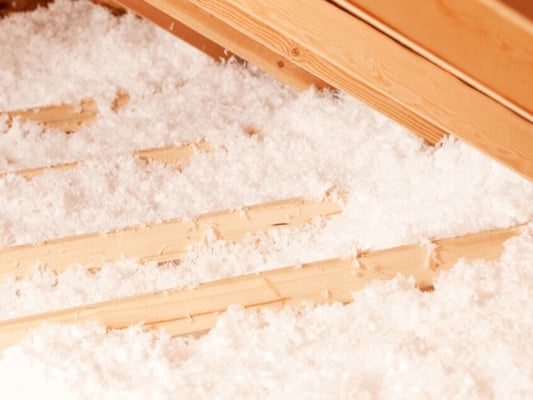Search for topics or resources
Enter your search below and hit enter or click the search icon.
December 13th, 2024
2 min read

You're planning to install blown-in insulation yourself. Or, you may have blown-in insulation in your attic that you don't want to disturb. Either way, you'll need to invest in the right personal protective equipment (PPE). When interacting with blown-in insulation, is it safe to breathe? Or do you need a mask?
South Central Services has insulated hundreds of new and existing homes around Greencastle, Pennsylvania. We know well about the safety of different insulation products and what PPE is needed to stay safe.
By the end of this article, you will understand:
Don't have time to read right now? Check out everything you need to know at a glance.
If you're concerned about blown-in insulation becoming airborne, your concern is valid. Blown-in insulation is made up of very fine particles that do become airborne.
But what exactly are these insulations made up of? The two most common types of blown-in insulation are blown-in fiberglass and blown-in cellulose. Let’s examine their materials in more detail.
Fiberglass insulation is made up of glass and plastic fibers. In the same way you don't want to touch fiberglass with your bare hands to avoid contact dermatitis, you do not want airborne loose-fill fiberglass particles in your lungs.

Cellulose insulation is composed of recycled paper materials, such as magazines and newspapers. The cellulose product our team installs, Nu-Wool, is made up of 86% recycled content.

Unlike glass fibers, cellulose isn't dangerous to breathe. However, it can irritate your lungs. If you have pre-existing allergies, the dust of cellulose insulation can be obnoxious.
Our recommendation is to wear PPE when working with blown-in insulations. Besides gloves to protect your hands, you can invest in an N95-style mask. These masks should be adequate to filter out these particles, whether you have loose fill fiberglass or cellulose.
.jpg?width=400&height=300&name=N95%20Batt%20(1).jpg)
.jpg?width=400&height=300&name=N95%20Dense%20Pack%20(1).jpg)
Between blown-in fiberglass and blown-in cellulose, only fiberglass is especially dangerous to breathe in. However, cellulose dust is still an irritant. Glass, plastic, and dust particles are never recommended for us to breathe in. If you need to interact with loose-fill insulation, wear an N95 mask to protect your lungs.
Now that you know how to keep your lungs safe when installing blown-in insulations, your next step is to:
Disclaimer: While we strive to publish information accurate to building science, local building codes and standards supersede our recommendations.
Alexis has been fascinated by spray foam insulation since 2018. When she isn’t thinking about insulation, Alexis is geeking out over storytelling and spreadsheets.
Topics: